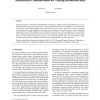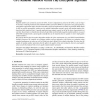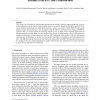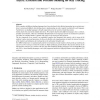EGH
2010
Springer
13 years 7 months ago
2010
Springer
This paper presents a more efficient way of computing single scattering effects in homogeneous participating media for real-time purposes than the currently popular ray-marching b...
EGH
2010
Springer
13 years 7 months ago
2010
Springer
EGH
2010
Springer
13 years 7 months ago
2010
Springer
This paper proposes a massively parallel hardware architecture for efficient tracing of incoherent rays, e.g. for global illumination. The general approach is centered around hier...
EGH
2010
Springer
13 years 7 months ago
2010
Springer
We present a rasterizer, based on time-dependent edge equations, that computes analytical visibility in order to render accurate motion blur. The theory for doing the computations...
EGH
2010
Springer
13 years 7 months ago
2010
Springer
Random numbers are extensively used on the GPU. As more computation is ported to the GPU, it can no longer be treated as rendering hardware alone. Random number generators (RNG) a...
EGH
2010
Springer
13 years 7 months ago
2010
Springer
EGH
2010
Springer
13 years 7 months ago
2010
Springer
Current GPUs rasterize micropolygons (polygons approximately one pixel in size) inefficiently. Additionally, they do not natively support triangle rasterization with jittered samp...
EGH
2010
Springer
13 years 7 months ago
2010
Springer
The k-D tree is a well-studied acceleration data structure for ray tracing. It is used to organize primitives in a scene to allow efficient execution of intersection operations be...
EGH
2010
Springer
13 years 7 months ago
2010
Springer
We modify the Reyes object-space shading approach to address two inefficiencies that result from performing shading calculations at micropolygon grid vertices prior to rasterizati...
EGH
2010
Springer
13 years 7 months ago
2010
Springer
While a number of different shading languages have been developed, their efficient integration into an existing renderer is notoriously difficult, often boiling down to implementi...




